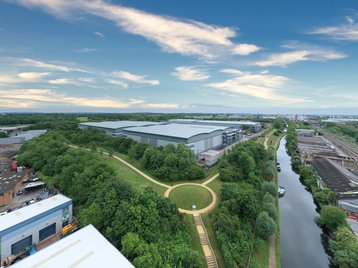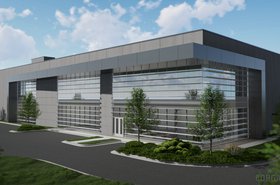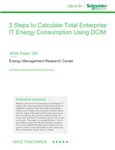In the world of digital infrastructure, data centers are widely recognized as the linchpin that power seamless online experiences.
However, as the demand for data processing skyrockets, attention intensifies on the environmental impact of these technological hubs, particularly concerning water usage for cooling.
It’s a widely discussed topic, with numerous conversations shedding light on the challenges and considerations associated with water consumption in data centers.
But fresh thinking is needed to ensure innovative solutions that not only address current concerns but also pave the way for sustainable practices in the future.
A nuanced view of water consumption
While media headlines often depict data centers as voracious consumers of water, a closer examination reveals a more nuanced reality.
It's essential to move beyond the narrative that water use is universally bad and focus instead on how data centers can optimize consumption, aligning with broader environmental goals.
In reality, the water-intensive nature of data centers is a multifaceted challenge.
The industry's growth has undeniably increased demand for cooling systems, which traditionally require substantial water input.
However, acknowledging this issue is just the first step.
What's more crucial is understanding the various approaches taken by data centers to manage and, in some cases, significantly reduce their water consumption.
Strategic water management: balancing growth and responsibility
The quest for efficiency in data centers, which inherently demand substantial resources, underscores the importance of responsible resource management.
Industry leaders are adopting innovative strategies to strike a balance between meeting the growing demand for data processing and minimizing their environmental footprint.
Consider a scenario where data centers are strategically located near bodies of water.
Rather than exploiting local water sources indiscriminately, some operators are implementing closed-loop systems. These systems involve using water during construction, and then maintaining a closed circulation within the facility, significantly reducing the need for continuous new water inputs.
This strategic water management not only addresses environmental concerns but also aligns with the broader goal of sustainable resource utilization.
Efficiency on the horizon: sustainable innovations in water usage
Pioneering sustainability efforts within the data center industry demonstrate a shift away from traditional cooling methods to more efficient technologies.
From advancements in cooling equipment to intelligent water usage strategies and the embrace of renewable energy, the industry is driving a holistic transformation toward a more sustainable data center ecosystem.
A noteworthy example is the strategic re-evaluation of cooling equipment. By altering the point in the cooling cycle at which water is introduced, operators can make substantial reductions in water consumption.
Implementing this practice, along with other efficiency initiatives, can save up to 55 percent of a facility’s water consumption, showcasing the industry's commitment to continuous innovation and sustainable practices.
Collaboration for impact: industry-wide solutions
We’ve seen plenty of case studies on operators who have successfully reduced their water consumption. But while individual success stories are great, sustainability is a collaborative journey.
Sustainable progress comes when operators unite to share best practices, techniques, and insights.
By adopting this collaborative approach, the industry can amplify the impact of its sustainability initiatives, reshaping its image from one plagued by environmental concerns to a sector at the forefront of exemplary practices.
This collaborative endeavor not only addresses reputational challenges but positions the industry as a trailblazer, paving the way for improved environmental stewardship.
It's good news that many data center operators are increasingly recognizing that sustainability is not a competitive advantage but a shared responsibility.
You only have to look back at DCD's article in July, stating that nearly 75 percent of European data center capacity is covered by the renewable energy pledge.
Innovations in approaches; redefining water usage
Tailoring strategies to regional needs is vital, as operating in diverse geographical locations presents unique challenges for data centers.
Operators should adapt their sustainability strategies to different climates and water availability scenarios.
Consider a data center in an arid region where water scarcity is a pressing concern. Here, operators are investing in alternative cooling technologies that significantly reduce reliance on water.
Evaporative cooling systems, for instance, utilize minimal water and leverage natural processes to maintain optimal temperatures within the data center.
And, beyond cooling technologies, data centers are exploring innovations that are more sustainable than traditional approaches. Some operators are investing in rainwater harvesting systems, utilizing precipitation to supplement water needs for non-critical operations.
By incorporating these alternative water sources, data centers not only reduce their reliance on local water supplies but also contribute to local water conservation efforts.
A holistic vision for data center sustainability
As data center providers, we understand the importance for data centers to reduce water consumption, so a fresh perspective is needed on the intricate relationship between data centers and water usage.
It’s a huge part of the industry’s commitment to responsible resource management, and open discussions and collaboration should continue; all aimed at fostering a nuanced and constructive discussion on the path towards sustainable data center operations.








